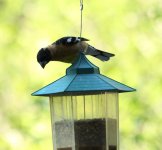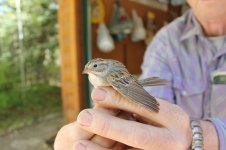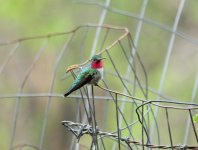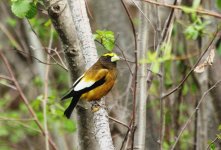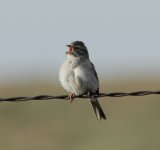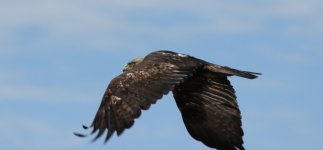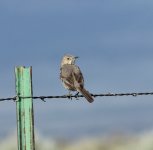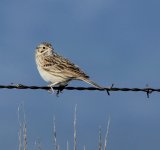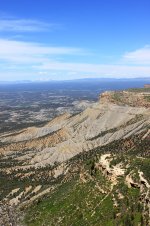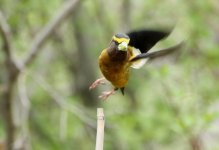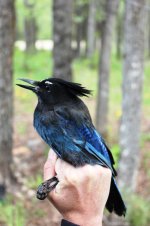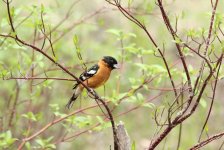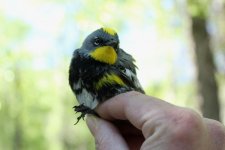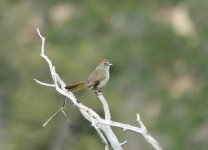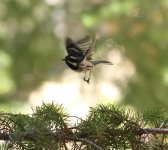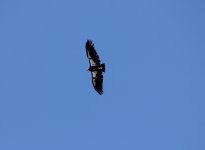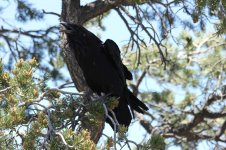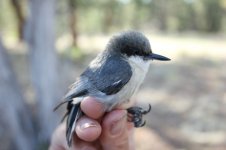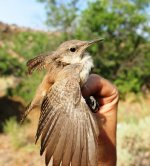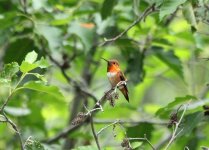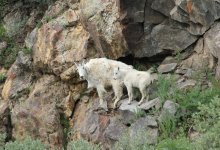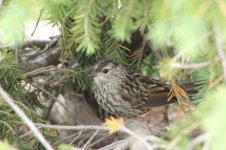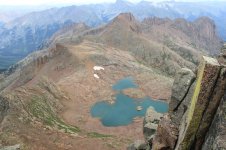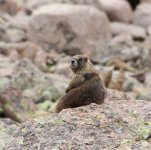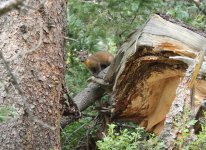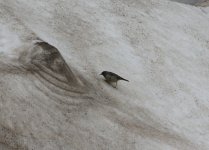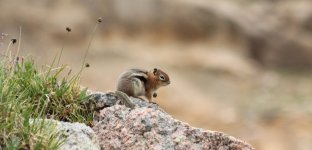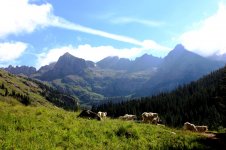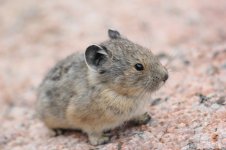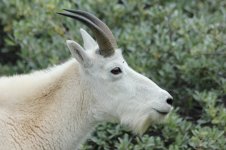ovenbird43
Well-known member

At long last, I finished my PhD and landed a job: 1-2 years as a postdoctoral researcher for the University of Arizona. I'll be spending this summer based in Dolores, SW Colorado, doing research on 5 different bird projects. I'll use this space to post general birding comments about the area, probably some photos of mist-netted birds, and descriptions of birding farther afield on our days off.
We're already over a week into work, we started out by stopping at our study sites near Walnut Canyon (just outside Flagstaff, AZ) on our way up from Tucson. This is an area of pinyon-juniper forest, where the pinyon is just coming back after beyond knocked out by drought. A nice flock of Pinyon Jays included some noisy juveniles, a good sign that the forest is recovering.
Here at our main site (and cabin) about 25 miles upriver from Dolores, CO, spring migration is in full swing, with Black-headed Grosbeaks mobbing the feeders and good numbers of Yellow-rumped (Audubon's) Warblers moving through. The first Cordilleran Flycatchers, the focus of one of our studies, have shown up this week. Some of the resident birds include both Mountain and Black-capped Chickadees and Evening Grosbeaks. A nice male Broad-tailed Hummingbird guards the hummingbird feeder, and we can hear his wings whistling all day as he chases off intruders and performs his diving displays. The other day we captured a Brewer's Sparrow, kind of a surprising find for this forested area- it was clearly a migrant though, with lots of stored fat and no evidence of breeding condition.
We're already over a week into work, we started out by stopping at our study sites near Walnut Canyon (just outside Flagstaff, AZ) on our way up from Tucson. This is an area of pinyon-juniper forest, where the pinyon is just coming back after beyond knocked out by drought. A nice flock of Pinyon Jays included some noisy juveniles, a good sign that the forest is recovering.
Here at our main site (and cabin) about 25 miles upriver from Dolores, CO, spring migration is in full swing, with Black-headed Grosbeaks mobbing the feeders and good numbers of Yellow-rumped (Audubon's) Warblers moving through. The first Cordilleran Flycatchers, the focus of one of our studies, have shown up this week. Some of the resident birds include both Mountain and Black-capped Chickadees and Evening Grosbeaks. A nice male Broad-tailed Hummingbird guards the hummingbird feeder, and we can hear his wings whistling all day as he chases off intruders and performs his diving displays. The other day we captured a Brewer's Sparrow, kind of a surprising find for this forested area- it was clearly a migrant though, with lots of stored fat and no evidence of breeding condition.




